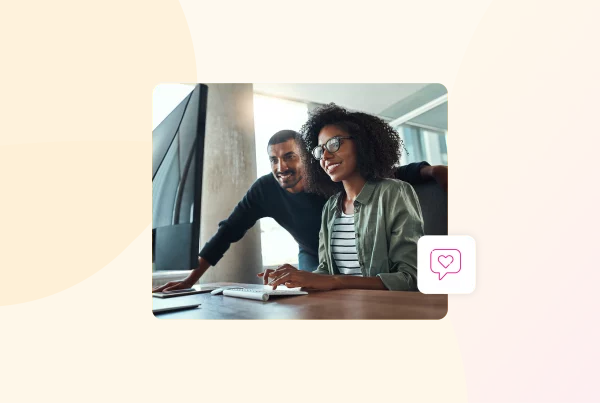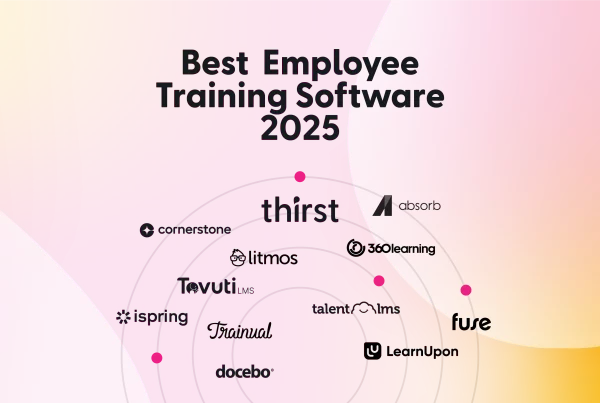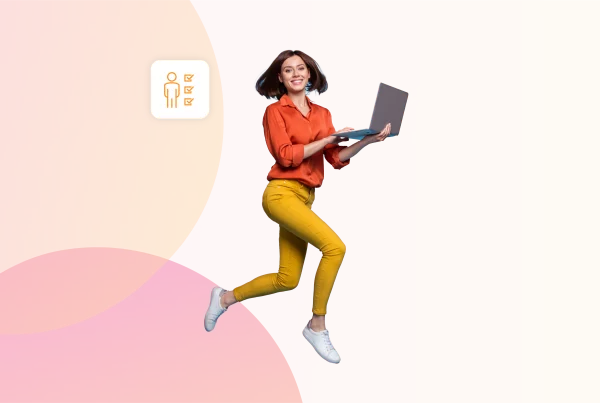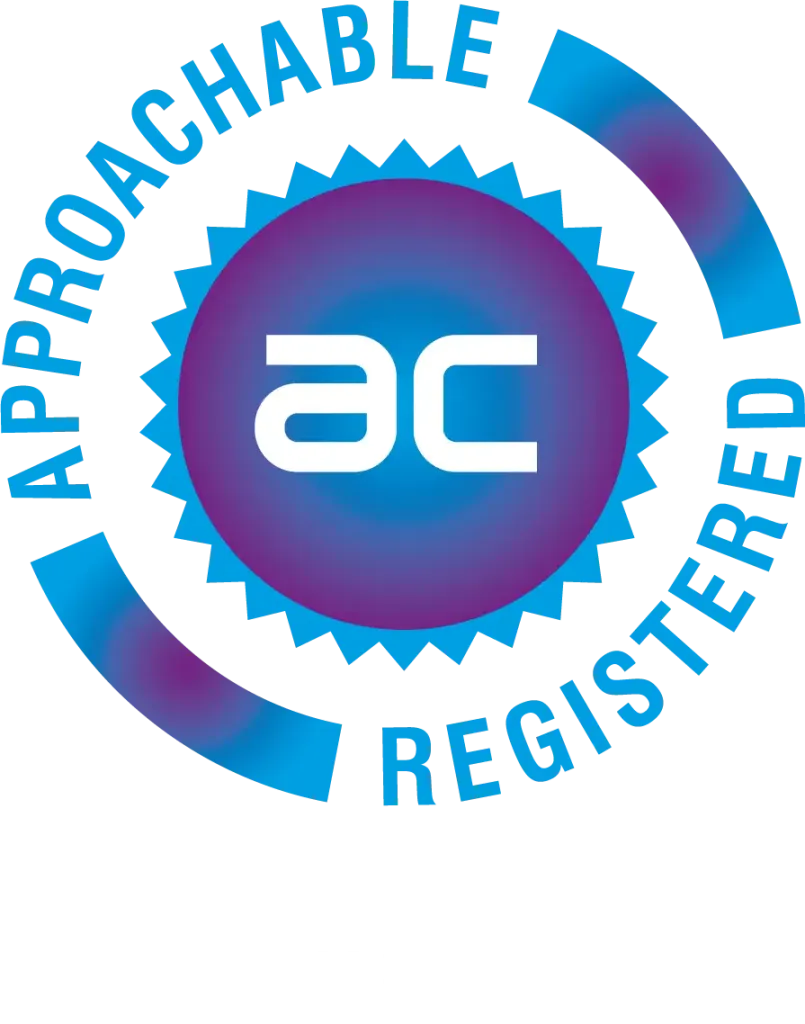Hard and soft skills play a vital role in all aspects of life.
Here we’ll be looking at the key differences between hard and soft skills, including how to develop and nurture both skill sets in your organisation. 👌🏼
Let’s start with a most frequently asked question…❓
What is the difference between hard skills and soft skills?
Hard skills are job-specific technical abilities acquired through education and experience, and soft skills tend to be more interpersonal and behaviour driven.
Both hard and soft skills are extremely valuable and often complement each other to create a well-rounded and capable individual.
Let’s take a look at some examples of hard and soft skills.👇
What are hard skills?
Hard skills refer to specific technical abilities learned through formal education, training, or practical experience.
These skills are often quantifiable and can be easily measured and tested. 🧪
Hard skills are usually job-specific and are directly related to performing tasks and duties in a particular field.
Some examples of hard skills include:
- Language proficiency (e.g., speaking multiple languages)
- Programming languages (e.g., Python, Java, C++)
- Accounting and financial analysis
- Data analysis and statistical knowledge
- Mechanical skills (e.g., carpentry, plumbing)
Hard skills are crucial for performing specific tasks and are typically listed on CVs or job applications as they demonstrate a person’s qualifications and expertise in a particular area.
What are soft skills?
Soft skills are more intangible and relate to a person’s interpersonal and social abilities. 🗣️
They are often associated with emotional intelligence, communication, and the ability to work well with others. 🧑🏻🤝🧑🏻
Soft skills are not easily measured or quantified, but they are equally important in both professional and personal settings.
Some examples of soft skills include:
- Communication skills (verbal and written).
- Emotional intelligence and empathy.
- Teamwork and collaboration.
- Problem-solving and critical thinking.
- Adaptability and flexibility.
- Time management and organisation.
- Leadership and management abilities.
- Conflict resolution and negotiation.
How to develop hard and soft skills in your workforce 💪
Developing hard and soft skills in your workforce is essential if you want to create a well-rounded, capable, and high-performing team.
Here are some strategies you can implement to foster the growth of these skills among your employees.
<
Developing Hard Skills in the Workplace…
Training Programs ⛑️
Formal training programs, workshops, and courses to enhance technical skills specific to your industry or field are an excellent way to develop hard skills.
On-the-Job Learning 👩🏼🏫
Create opportunities for employees to learn and practise new skills while working on real projects. It’s a great idea to encourage them to take on challenging tasks requiring acquiring and applying new technical abilities.
Mentorship and Coaching 👨🏻💼👩🏽💼
Pair experienced employees with those who are looking to develop specific hard skills. Mentors can provide guidance, share their expertise, and offer hands-on training.
Certifications 🏆
Support employees in obtaining relevant certifications that validate their technical competencies. Many industries have recognised certifications that can boost employees’ credibility and career prospects.
Online Learning Platforms 💻
Provide access to learning platforms like Thirst and resources where employees can take courses and tutorials to improve their technical skills at their own pace.
Did you know?
Thirst can help you upskill and reskill your workforce. 💡
Developing Soft Skills In The Workplace
You may think that developing soft skills within the workplace could be somewhat of a challenge, as soft skills are often intangible.
In practice… It couldn’t be easier.
We recommend…
Communication Workshops 🗣️
Facilitate workshops on effective communication, active listening, and clear expression. Encourage employees to practise communication skills through group discussions, presentations, and role-playing exercises.
Team Building Activities 🧑🏾🤝🧑🏾
Organise team-building exercises and activities that require collaboration, problem-solving, and conflict resolution. These activities can help improve teamwork and interpersonal relationships.
Feedback and Self-Assessment 🗒️
Encourage employees to seek feedback from peers and supervisors to improve their self-awareness. Provide tools for self-assessment and reflection on soft skill development.
Leadership Development Programs 📈
Offer programs focusing on leadership skills, even for employees not in formal leadership roles. Leadership skills are valuable at various levels within an organisation.
Diversity and Inclusion Training 🏳️🌈
Provide training on cultural sensitivity, diversity, and inclusion to promote empathy, respect, and effective interaction among employees from different backgrounds.
Stress Management and Resilience Training 😫
Help employees develop emotional intelligence, stress management techniques, and resilience to navigate challenges healthily and productively.
How to use hard skills and soft skills to improve your L&D outcomes
Using both hard skills and soft skills strategically in your Learning and Development initiatives can create a more holistic approach to employee development.
Here are ten ways to leverage these skills effectively:
1. Identify Learning Objectives 📃
- Hard Skills: Determine specific technical competencies or knowledge gaps that need to be addressed within your workforce.
- Soft Skills: Identify interpersonal skills that are crucial for teamwork, leadership, and effective communication
2. Design Training Programs 📚
- Hard Skills: Develop structured training modules, workshops, or e-learning courses focused on technical subjects.
- Soft Skills: Create interactive workshops, role-playing exercises, and case studies to develop communication, leadership, and problem-solving skills.
3. Blend Learning Approaches 🖥️
- Combine online courses, simulations, and hands-on projects for hard skills.
- Utilise group discussions, peer feedback, and experiential learning for soft skills.
4. Individual Development Plans 🖇️
- Assess employees’ current hard and soft skill levels to create personalised development plans.
- Set clear goals and milestones for improvement in both skill sets.
5. Coaching and Mentorship 🧑🏻🤝🧑🏼
- Hard Skills: Provide subject-matter experts as mentors for technical skill development.
- Soft Skills: Assign mentors who excel in areas like leadership, communication, and emotional intelligence.
6. Assessments and Feedback 🗣️
- Regularly evaluate employees’ progress in acquiring hard skills through tests, assignments, or projects.
- Use 360-degree feedback to assess improvements in soft skills like teamwork and communication.
7. Real-Life Application ✏️
- Encourage employees to apply newly acquired hard skills directly to their job tasks.
- Provide opportunities for practising soft skills through team projects, presentations, and collaboration.
8. Leadership Development 👨🏻🏫
- Incorporate soft skills training into leadership development programs to cultivate effective managers.
- Combine hard skills like data analysis with soft skills like decision-making for well-rounded leadership.
9. Continuous Improvement ♻️
- Regularly update hard skills training to stay current with industry trends and technological advancements.
- Offer ongoing soft skills workshops to reinforce effective communication, adaptability, and emotional intelligence.
10. Measure and Adjust 📊
- Track the impact of your L&D initiatives on overall performance, job satisfaction, and employee retention.
- Use feedback and data to refine your approach and tailor future programs.
By integrating hard and soft skills into your L&D strategy, you can enhance technical proficiency whilst nurturing strong interpersonal abilities, resulting in more capable, adaptable, and successful employees.
Did you know that Thirst can help you to build on both hard and soft skills in your workplace?
Here’s how…
Thanks to a dedicated portal, your employees can now access insights, resources, and company-wide expertise effortlessly, enabling them to learn faster and smarter.
Additionally, Thirst assists in identifying knowledge gaps among individuals and teams, resulting in more thoughtful and precise outputs from your team. 👌
Over 100 L&D teams trust Thirst to support knowledge sharing within their organisation. 🫶
Want to try it for yourself? 🙋🏽
Get a free 1:1 demo of the Thirst platform now.
For more e-learning insights, resources and information, discover the Thirst blog
You may also enjoy:
What Is Social Learning Theory, and Why Is It Important? | How to Create a Great Leadership Development Plan in 2023 | 7 Ways to Identify Knowledge & Skills Gaps in Your Workforce







